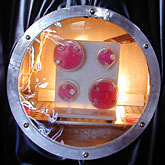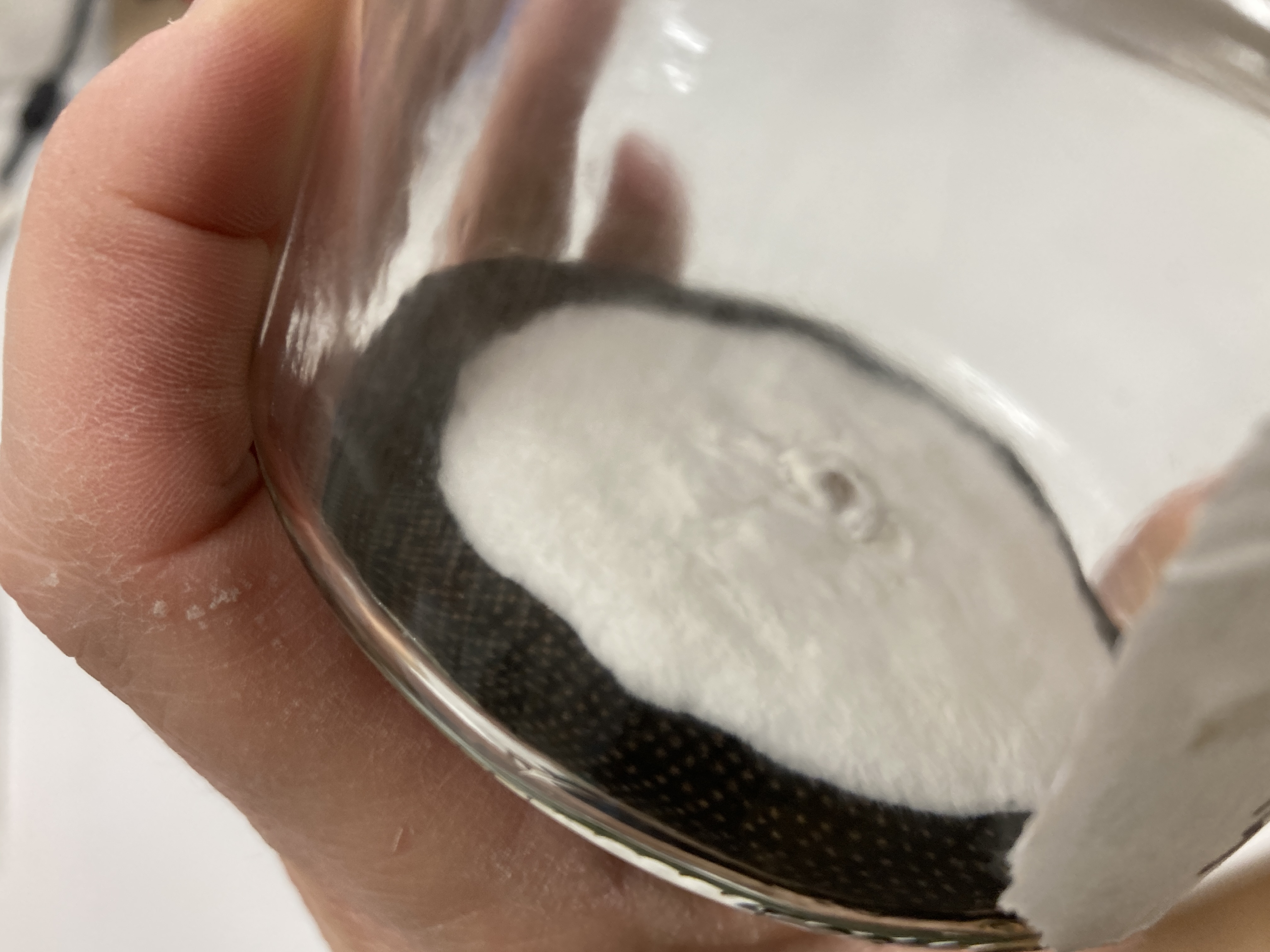12/5 BIOHACK ACADEMY SHOWCASE 2022
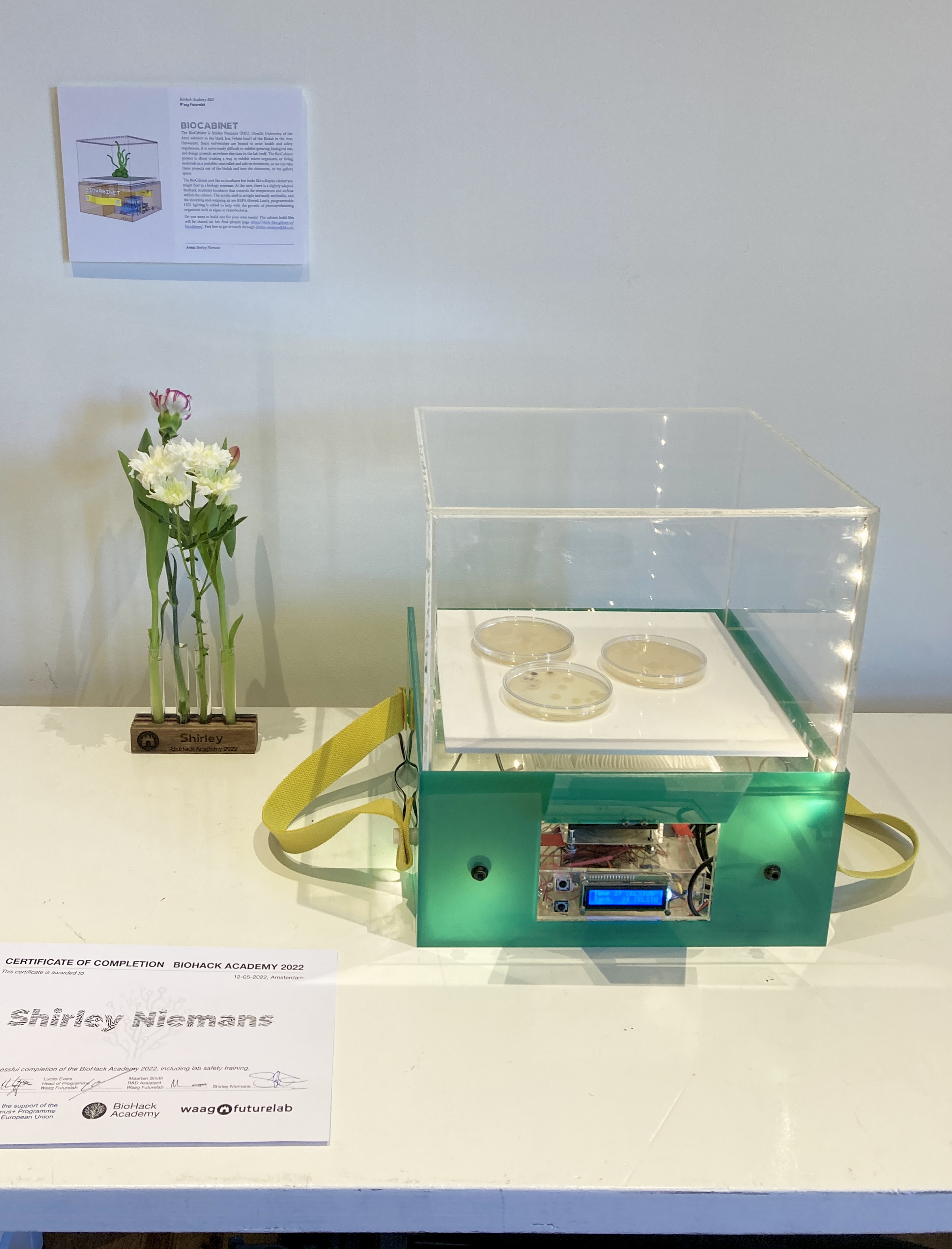
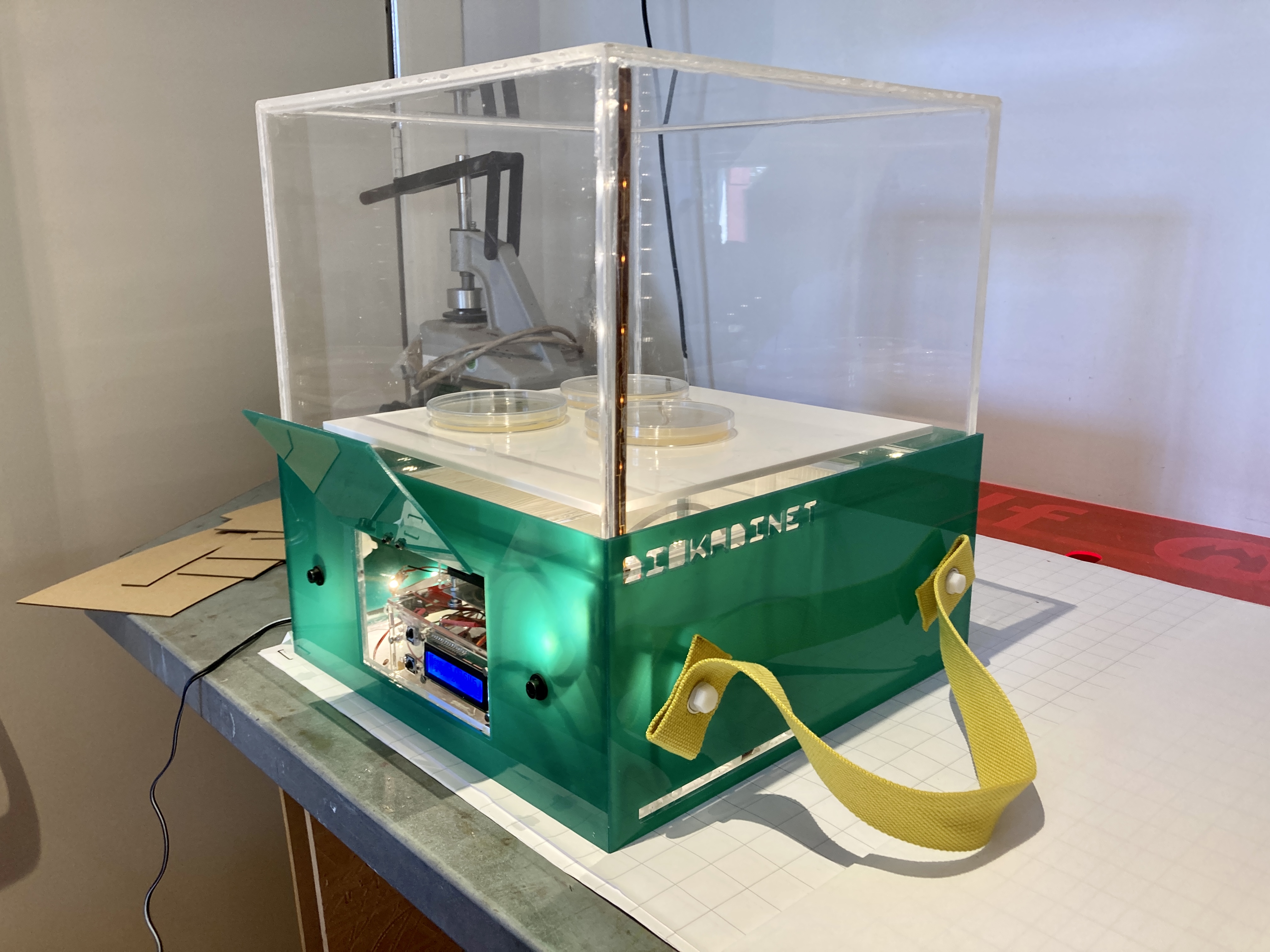
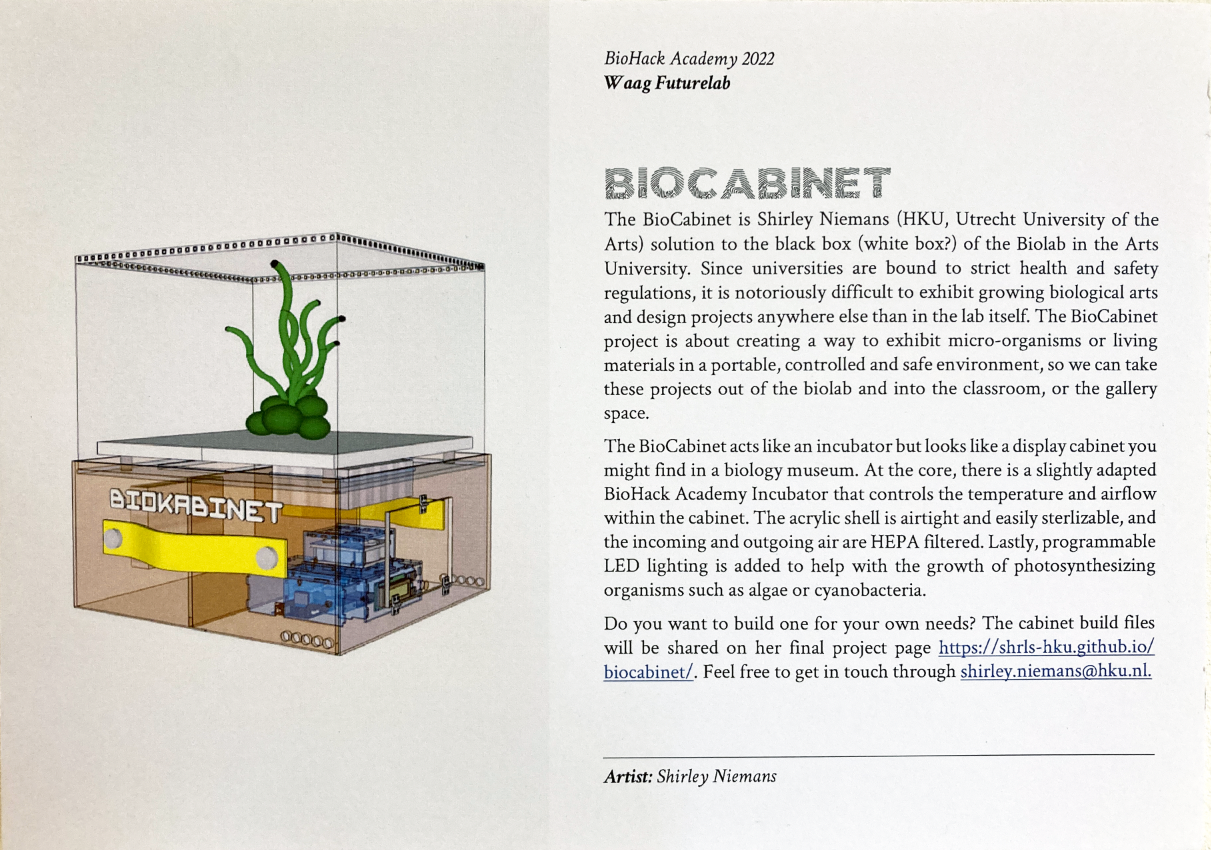
“The BioCabinet is Shirley Niemans (HKU, Utrecht University of the Arts) solution to the black box (white box?) of the Biolab in the Arts University. Since universities are bound to strict health and safety regulations, it is notoriously difficult to exhibit growing biological arts and design projects anywhere else than in the lab itself. The BioCabinet project is about creating a way to exhibit micro-organisms or living materials in a portable, controlled and safe environment, so we can take these projects out of the biolab and into the classroom, or the gallery space.
The BioCabinet acts like an incubator but looks like a display cabinet you might find in a biology museum. At the core, there is a slightly adapted BioHack Academy Incubator that controls the temperature and airflow within the cabinet. The acrylic shell is airtight and easily sterlizable, and the incoming and outgoing air are HEPA filtered. Lastly, programmable LED lighting is added to help with the growth of photosynthesizing organisms such as algae or cyanobacteria.”
30/4 - 12/5 BUILDING THE BIOCABINET
Here, I will soon describe the building process in detail, and include my design files, bill of materials, code and ideas for further development. Should you need them sooner, please feel free to contact me at shirley.niemans@hku.nl.
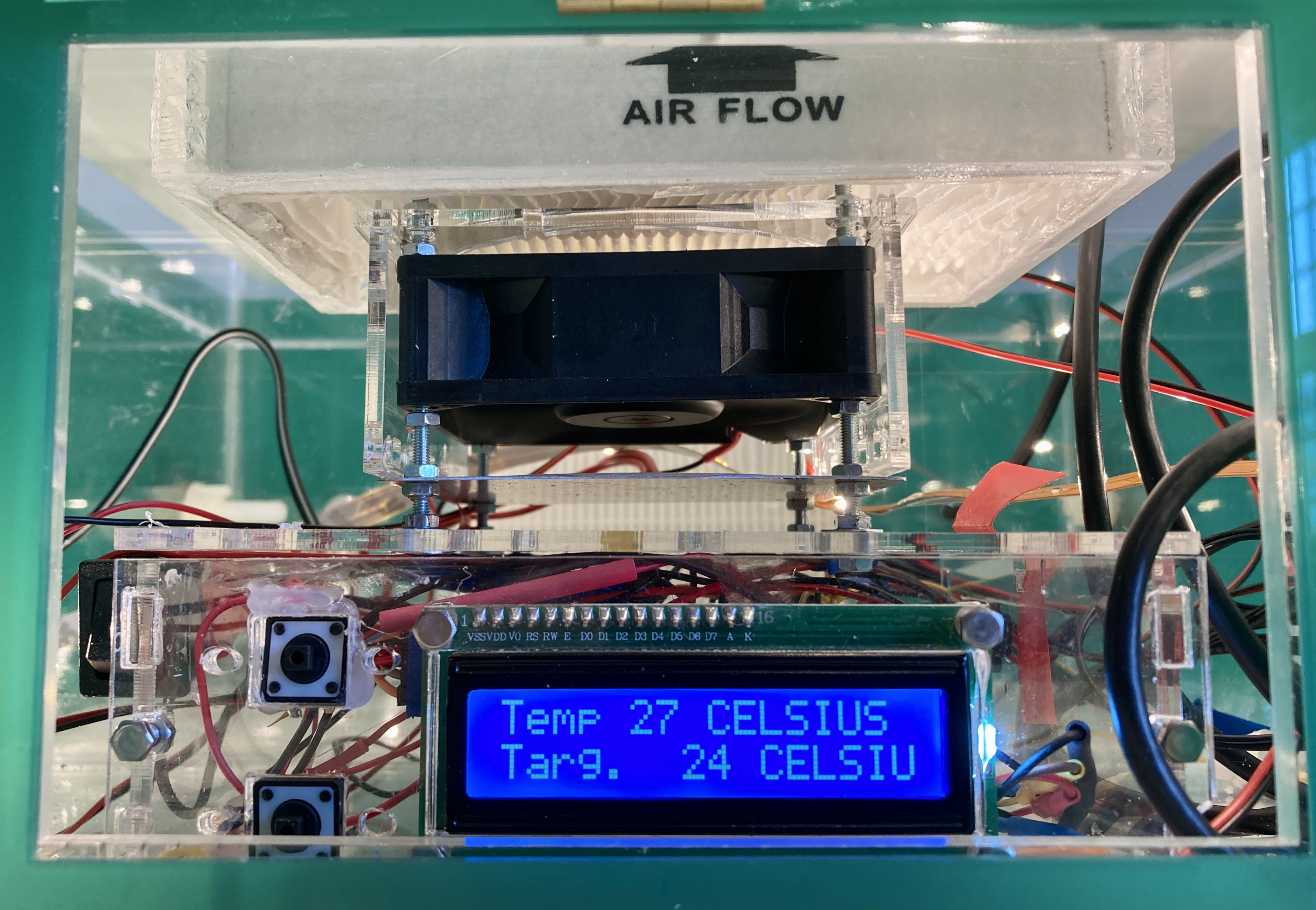
27/4 SAFETY UPDATE & SECOND SKETCH
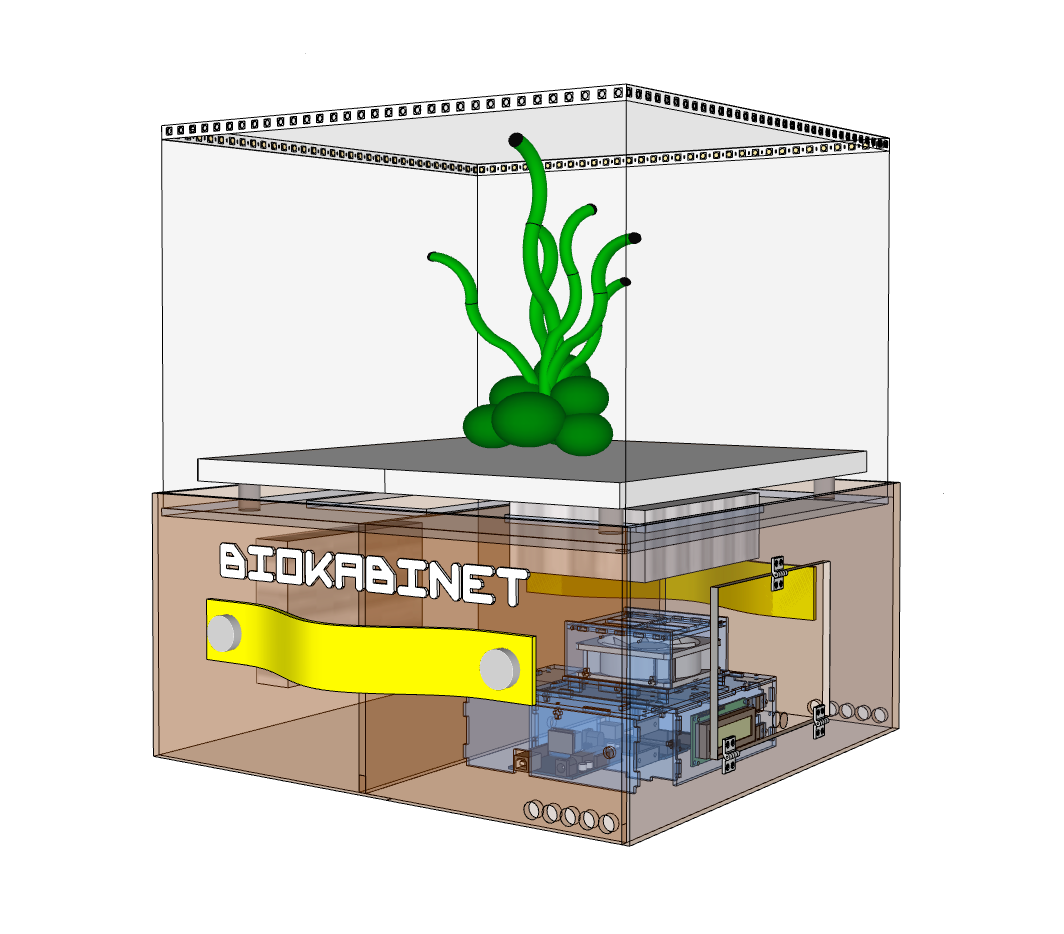
Per Staugaard commented that it might be wise to further seperate the incoming and outgoing air filters, perhaps even move the first into the electronics compartment, above the fan. That way, we create an “open” electronics compartment, and two closed, connected compartments where the warm air enters the display, is then transported to the lower back compartment, where it leaves through the second HEPA filter. This made the design complete and I could get building.
25/4 BIOCABINET: FIRST SKETCHES
To gather more vantage points on the safety and the design of what I started thinking of as a biocabinet of curiosities, I reached out to Per Staugaard, Waag’s biosafety officer, and Ionat Zuerr of the SymbioticA lab in Perth that has developed a toolkit for building exhibitions for biological art works, and have more than two decades of experience in it. I’m very interested in the question how one negotiates biosafety guidelines when taking living works out of the biolab and into other public spaces.
Cabinet requirements
The cabinet to build should be able to safely exhibit and sustain non-pathogenic living microorganisms - fungi, bacteria, yeasts etc, and also safeguard works using bodily fluids and other human materials (I have some experience with these student interests :). There should probably be the option to filter incoming and outgoing air, temperature control and adaptable or programmable lighting. It is important that the cabinet is mobile / easily moveable, but sturdy and can’t tip over. The display should be inviting, you can clearly see inside, but you can’t open it, or change any of the settings. Aesthetically I would like to stay away from the biosafety cabinet look and more towards a cabinet of curiosity or a biology museum display.
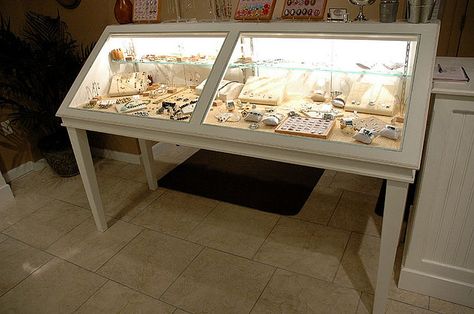
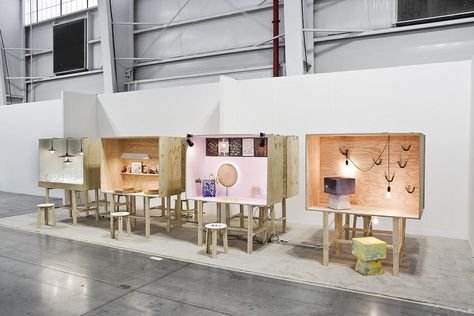
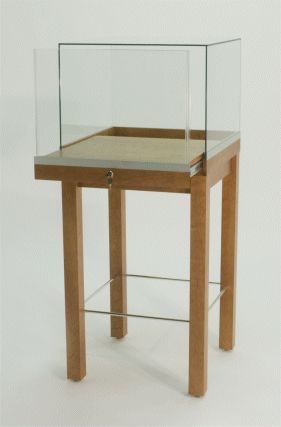
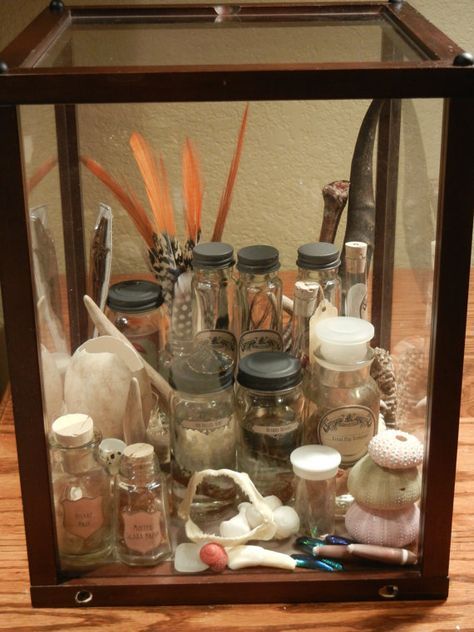
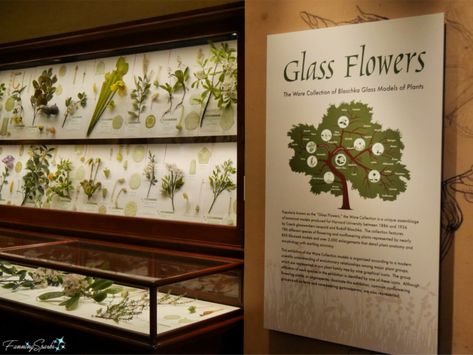
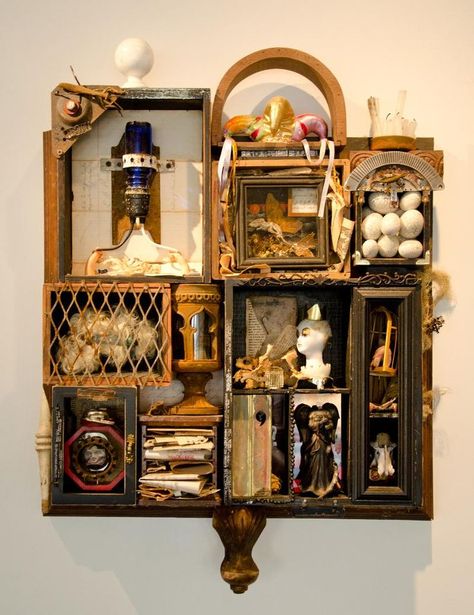
Sketching
I started collecting images and sketching out ideas, which resulted in these first 3D sketches below, meant for communicating the idea and gathering more feedback.
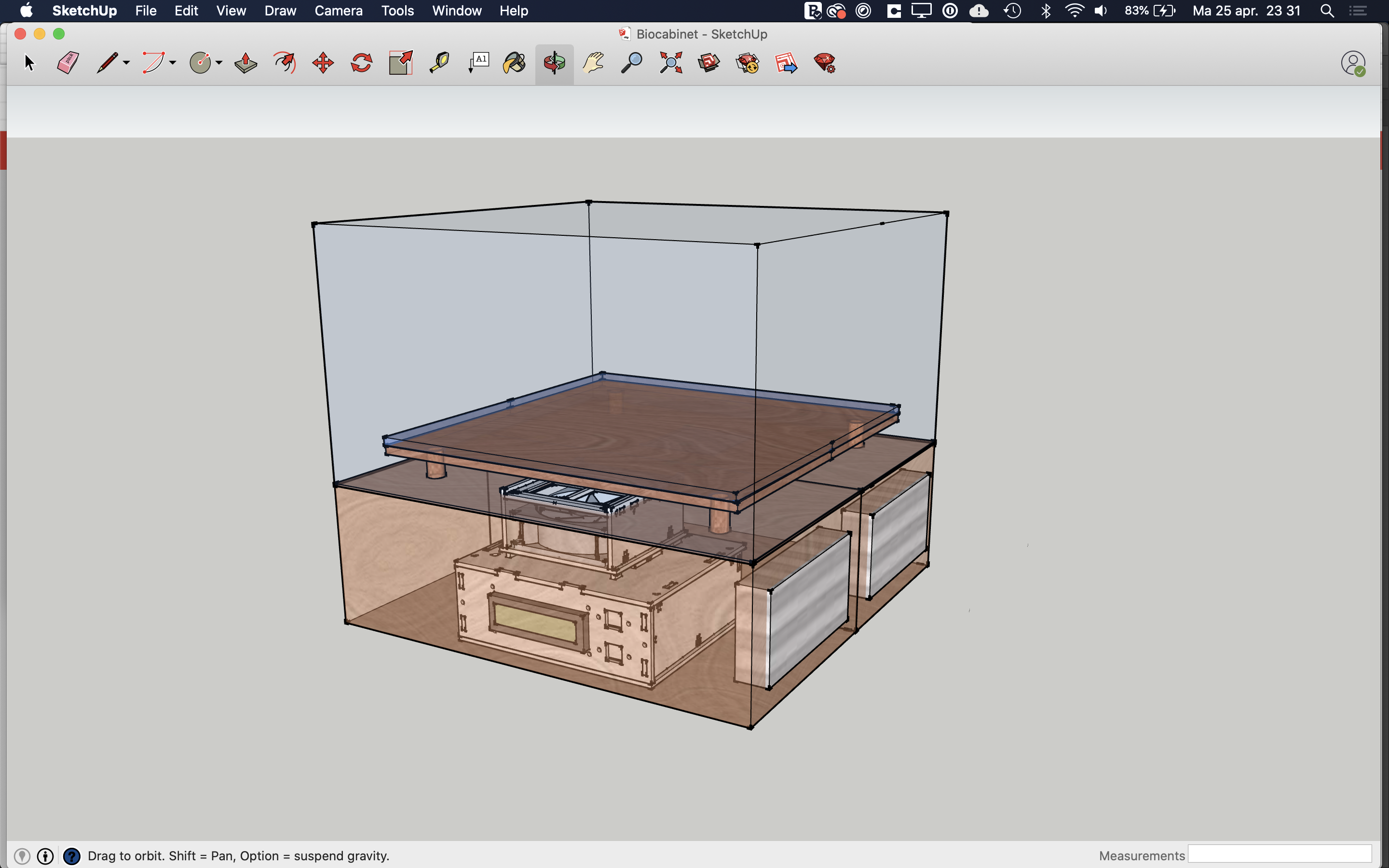
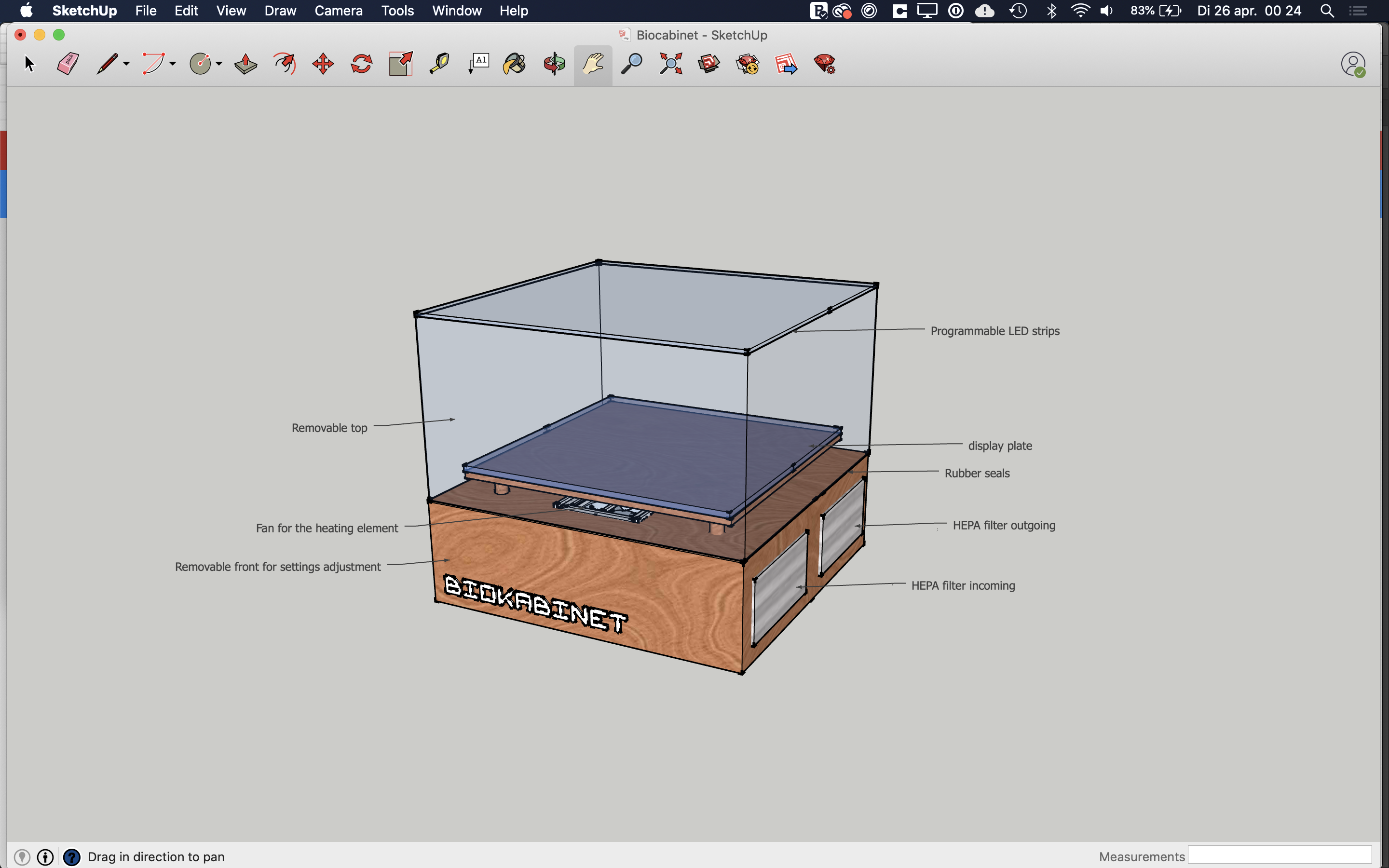
18/4 FIRST IDEAS
Out of the first set of ideas below, nr 3. External biolab display was chosen, since it seems valuable for other labs as well, and it would be nice to share it as a BHA project on Github. The class also liked that it challenges the notion of what a biolab is or can be (science vs public), and at the same time highlights the difficulties surrounding the exhibition of living artworks.
1. Algae for the living material archive
I would like to build an algae bioreactor/cultivator for the HKU biolab with space to grow various species of macroalgae (seaweed) and microalgae (phytoplankton) and control conditions such as lighting and temperature. I want to make these materials, samples and the knowledge about them available to the students for use in e.g. biomaterial making and textile dyeing, but also to convey the idea that energy can be harvested with biomass and how algae can be a really powerful food source. How can an installation basically inspire more exeriments an research on this organism?
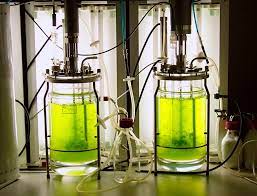
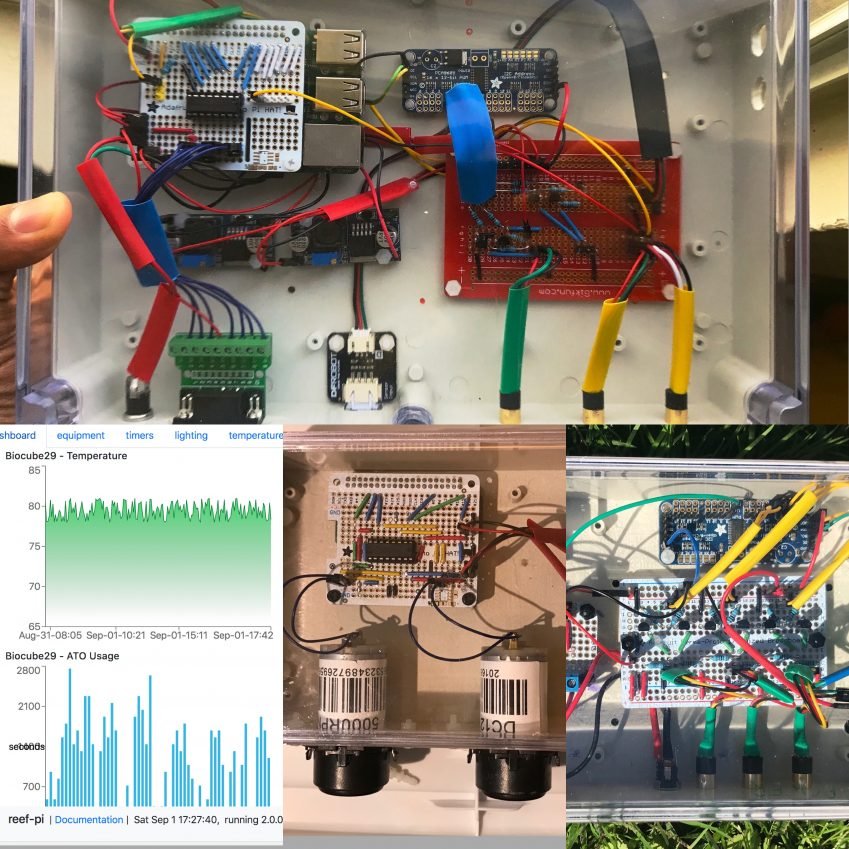
2. Printing and displaying living materials
In my own time I’ve been experimenting with growing layers of mycelium on RISO prints, planning to later stencil layers or 3d print nutrients. I would like to futher pursue and extend this by
- exploring the relation between by using various organisms (myceliums, bacteria, yeasts, algae?) visually in the work, e.g. as either consecutive layers or in concert, allowing competition as part of the design process.
- exploring other materials s.a. ceramics as a base
- developing a way to keep the work / this kind of work alive and contained and displaying it outside of the lab
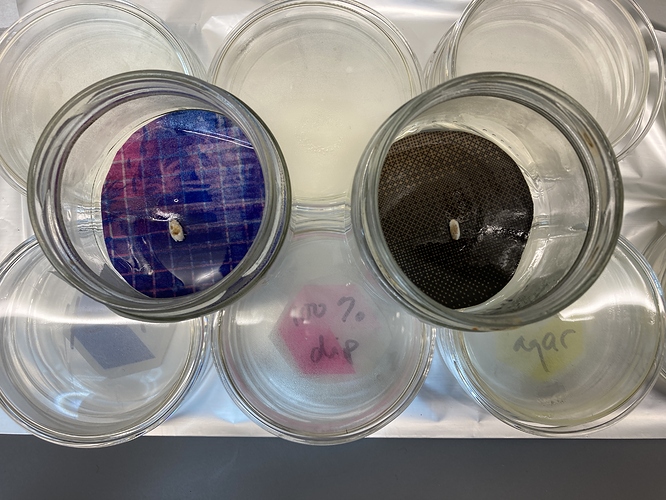
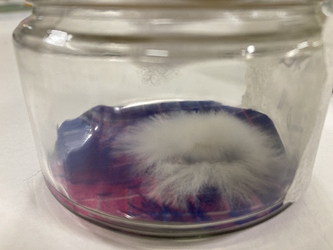
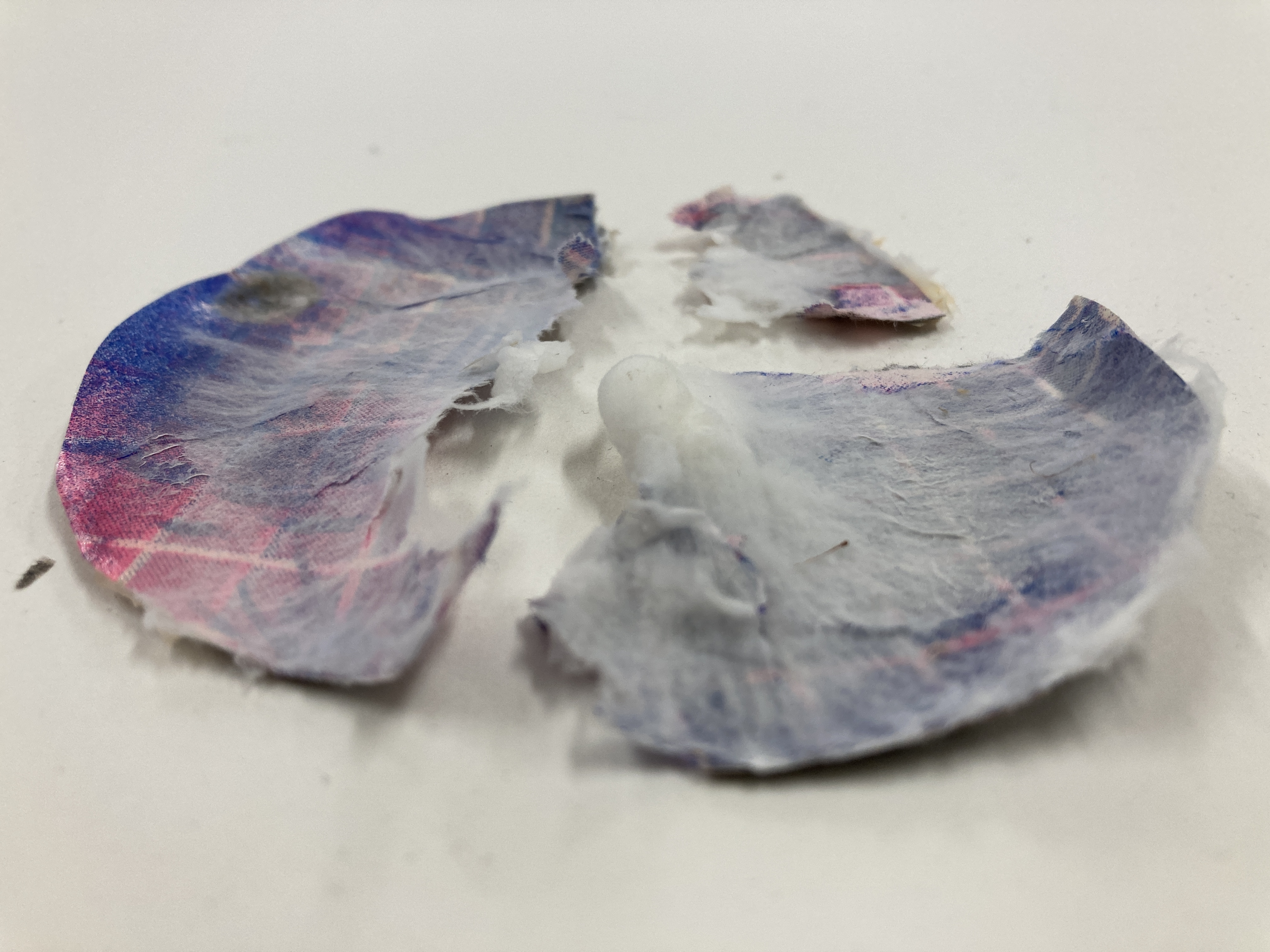
3. External biolab display
As the HKU biolab is at present quite hidden, I would like to build a mobile safety cabinet/display that is safe and attractive in which we can showcase work that is in development and alive and wouldn’t otherwise be able to leave the lab. Is this even possible, and under what circumstances?
